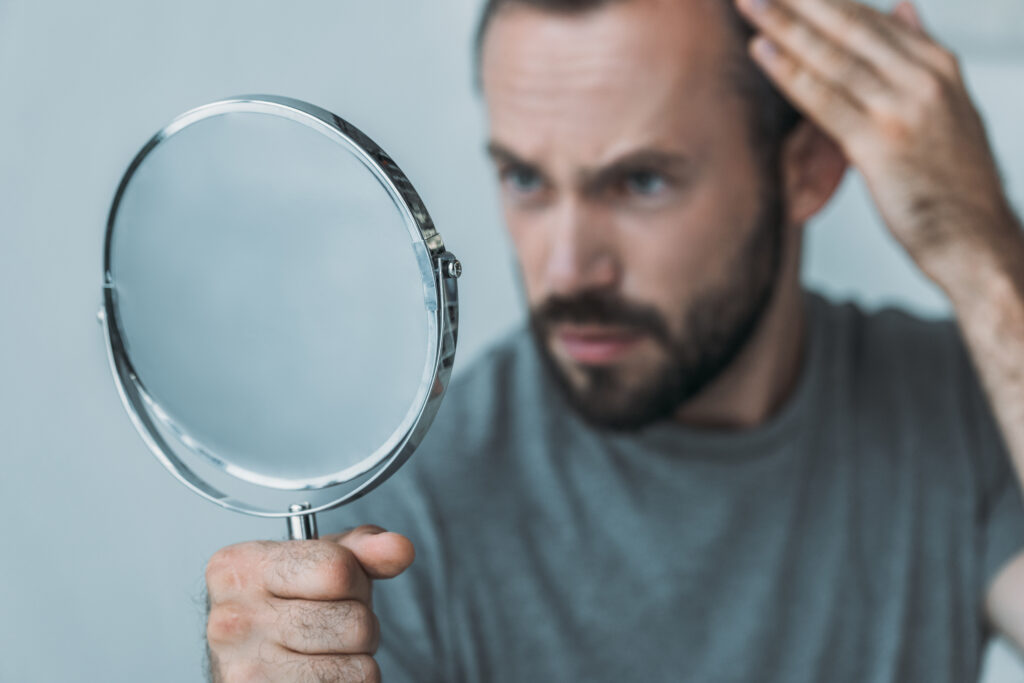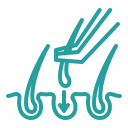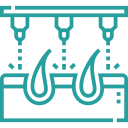Hair Loss Basics
Hair loss (alopecia) can affect just your scalp or your whole body, and it can be transient or permanent. It can be the consequence of heredity, hormonal shifts, medical requirements or a regular part of aging. Anyone can lose hair on their head, but it’s more expected in men.
Hair miniaturization is a natural method that happens in 95% of all hair loss cases. Miniaturization is the beginning moment from which male pattern baldness happens. It is a hormone-driven biological method in which hairs shrink in size over time, ultimately leaving a bald scalp. Individual follicles & hair persist to shrink over time and become dormant if left undiagnosed.
Hair miniaturization can be caused by:
- Genetics
- Age
- The hormone is known as dihydrotestosterone (DHT)

Signs of Hair Miniaturization
-
A Receding Hairline
1
-
Thinning hair at the crown or top of the head
2
-
More hair than expected on the pillow or in the shower drain
3
-
Corners of your hairline slowly moving upwards
4
-
Hair loss after combing
5
-
A widening part
6
Signs of Hair Miniaturization
-
A Receding Hairline
1
-
Thinning hair at the crown or top of the head
2
-
More hair than expected on the pillow or in the shower drain
3
-
Corners of your hairline slowly moving upwards
4
-
Hair loss after combing
5
-
A widening part
6

Genetics Hair Loss
Hereditary pattern baldness also called androgenetic alopecia, is genetic-based typical baldness that is grounded on precise inherited genes. When hair loss is caused by your genetics, it happens in a predictable pattern often referred to as female pattern baldness (FPB) or male pattern baldness (MPB).
If the reason for thinning hair is genetics, it will not rise back on its own. To grow back a healthy, full head of hair, you will require to take action, and that includes reviewing different hair loss options such as hair transplants.
Our doctors at MedLinks believe that understanding the genetics of hair loss is essential in the diagnosis as well as treatment of baldness.
Early Diagnosis: Get an early diagnosis. It aids in identifying patients who share an expanded risk of suffering from baldness. This permits our experts to treat their hair loss in its early stages with medications.
Psychology of Hair Loss
Every human society in the world associates luxurious hair with youth, beauty, and good health. Many people think that it is their hair which makes them look beautiful and once they start losing their hair, it can be disastrous for them.
Many people take this sportingly but many people are not able to manage the issue, this can have serious psychosocial effects, causing intense emotional suffering, and personal, social and work-related concerns.
This loss of hair can lead to anxiety, loss of self-esteem, and low confidence initially further deepening depression & other emotional issues.
- Anxiety
- Loss of self-esteem
- Low confidence level
- Depression
- Emotional issues


Commonly Faced Problems
Psychologists have mostly neglected alopecia. There has been very little research carried out, especially by psychologists; dermatologists and other medical practitioners have conducted most of it. These are the few problems commonly faced by a person who is not able to deal with hair loss.
Hopelessness:
Though few people easily accept the fact of hair loss, there are a few others who fall into a vicious cycle of insecurity, depression & poor self-image due to their baldness. This leads to significant workplace problems.
Inability to approach the opposite sex:
Hair loss can affect relationships as men often feel that the loss of their hair signals the end of their youth and attractiveness to others.
Social avoidance:
A person avoids attending social meetings and other events to avoid being seen with a balding appearance by others. Some people could not go outside or go to work for fear of being mocked.
Hair Cycle
Hair on the scalp grows about .3 to .4 mm/day. Unlike other mammals, human hair growth and shedding are random and not seasonal or cyclical. There are three stages of hair growth:-
- Anagen- In this phase cells in the root of the hair divide rapidly so it is called the active phase of the hair cycle. At the time of new hair growth, the previous hair in the same follicle which has stopped growing or is no longer in the anagen phase known as club hair is pushed out by the newly growing hair. Eventually, this club hair falls off and the growth of new hair sets in.
- Catagen- This is a transitional stage in which the hair follicle renews itself and about 3% of hairs are in this phase at any time. This phase lasts for about two to three weeks. In this phase, hair loses its blood supply & doesn’t grow further. Growth of the hair stops and the outer root sheath shrinks and attaches to the root of the hair. This leads to the formation of what is known as a club hair.
- Telogen- Telogen is the resting phase for the hair and usually accounts for 6% to 8% of all hairs. This phase lasts for about 100 days for hairs on the scalp and longer for hairs on the eyebrow, eyelash, arm, and leg. In this phase, the hair follicle is completely at rest and the club hair is formed. Pulling out a hair in this phase will reveal a solid, hard, dry, white material at the root. About 25 to 100 telogen hairs are shed normally each day. At the end of the telogen phase, the newly growing hair pushes out the telogen hair & the anagen phase starts for that follicle.
Anatomy of Hair Follicle
Humans have approximately 5 million hair follicles and 100,000 of them are located on the scalp. In humans, the whole body is covered with hairs except the palm, sole, lips & genitals. Hair serves the aesthetic function of adding beauty to the human body & it’s a characteristic feature of mammals.
Hair is derived from the epidermis and consists of two different parts:
- Hair follicle: living part located under the skin.
- Hair shaft: non-living part above the skin.
Hair follicle:
it is a very important growth structure of the hair consisting of two main parts.
- Upper infundibulum & isthmus: from the insertion of the arrector pili muscle to the skin surface.
- Lower suprabulber & bulb: begins from the base of the hair follicle and ends at the insertion point of the arrectorpilimuscle
Hair Shaft:
It’s a thin strand of hardened cells that is visible above the scalp. The thickness of a hair varies something in-between 0.04-0.12mm. The hair shaft consists of three layers:
- Cuticle
- cortex
- medulla
At any given time, a random number of hairs will be in one of three stages of growth and shedding: anagen, catagen, and telogen.

What to do about hair loss?
Hair loss is a major problem. Multiple solutions are available to the problem one requires to identify the problem instead of denying it and then take proactive steps & seek help. So, consult MedLinks today and get yourself checked by our professional Dr. Gaurang Krishna.
Frequently Asked Questions
Hair loss is an incredibly common occurrence and concerns most people to contrasting degrees at some point in their lives. Hair loss can happen due to one or a combination of the following: severe stress, conditions such as thyroid disease and anemia, genetics, nutritional differences, hormonal modifications related to puberty, pregnancy and menopause, vitamin D insufficiency, or side effects of strong medication (such as chemotherapy).
Alopecia areata is an impulsive loss of patches of hair without any of the obvious causes.
- Your hair falls out in patches for no clear reason
- Alopecia areata is standard and happens most often in children and young adults
- The hair loss is usually from the scalp or beard
- Your fingernails may become ragged and pitted
Alopecia areata causes:
- Round patches of missing hair—patches can be diminutive or you can lose all the hair on your scalp
- You may notice short, damaged hairs at the boundaries of the patches. You may have irregular and pitted nails. There are no other symptoms, and you otherwise feel well.
Most people don’t know how many grafts they will require as they don’t know how many transplanted hair grafts it takes to suffice a particular area of hair loss or thinning hair to get full healthful hair growth. The correct answer is not the same for everyone and varies from 1,200 – 1,500.
In many circumstances, non-surgical hair treatments can deliver benefits. The patient may be asked to restrain his lifestyle, lower stress and work on the diet. Nevertheless, when it comes to male pattern baldness, these therapies and options might not deliver good results. Doctors may recommend medications, lasers and other opportunities, but the success depends on numerous factors, which will be explained to the patient.






























